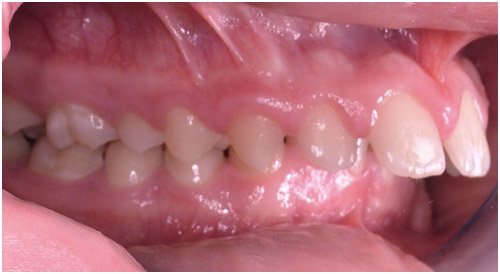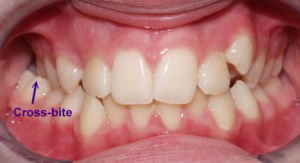Self-Check: Symptoms of Orthodontic Problems
Self-diagnosing a need for orthodontic treatment isn’t always accurate, however, the following symptoms are generally good indicators that you should seek orthodontic treatment.
- Open your (or your child’s) mouth and look at the teeth. Do you see any signs of crooked teeth, gaps between teeth, or overlapping teeth?
- Bite all the way down, but keep the lips open so you can see the teeth (a.k.a. smile!). Do the top teeth protrude out away from the bottom teeth? Do the top front teeth cover more than 50% of the bottom teeth? Are the top teeth behind the bottom teeth?
- Time to look at the jaw alignment. (Use a mirror if necessary.) When you bite down, does the jaw shift off center? Do you see any misalignment or shifting of the jaw? there may be a skeletal problem, which should be addressed orthodontically as soon as possible.
- Look at the graphic below. Does your bite match any of those abnormal bites?
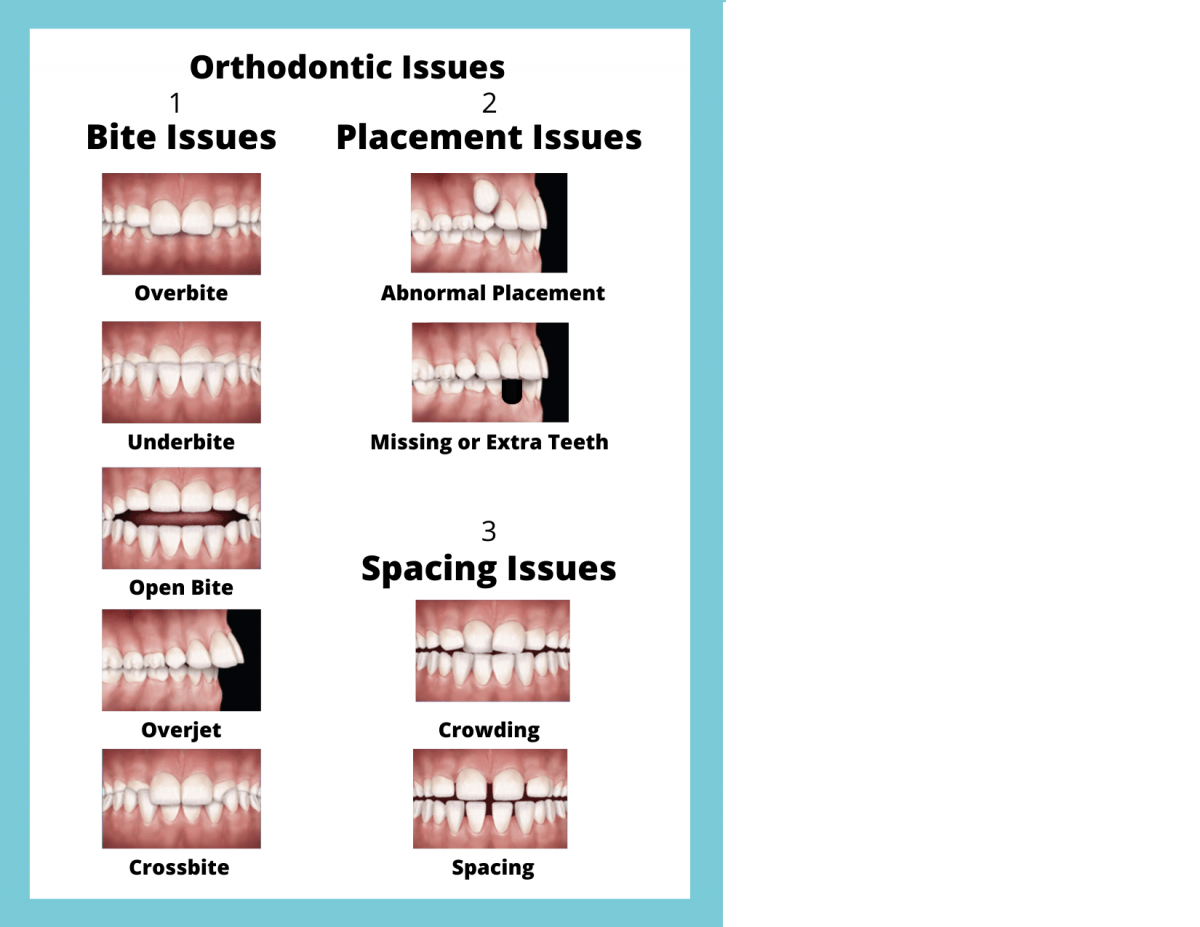
If you answered yes for any of these questions, you may need orthodontic treatment and would benefit from a free initial exam with Dr. Woo. These are only some of the obvious symptoms of orthodontic problems; however, teeth can look straight and still need orthodontic care for improved function! Call us for a free initial exam.
Below are short summaries and descriptions of common orthodontic problems that you may be experiencing:
Overbite
An overbite occurs when the upper and lower jaw are not aligned so that the upper teeth cover the lower teeth. Overbites can be due to a large upper jaw, a small lower jaw, protruding upper teeth, or a combination of these factors. Orthodontists call this a class II problem (see “Bite Classification” for an explanation of classes.) Typically this jaw growth pattern is inherited, but can be worsened by habits such as thumb-sucking.
Underbite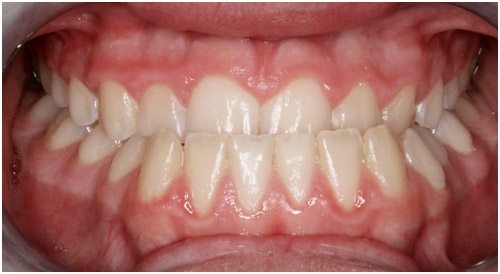
Underbites are usually an inherited trait, and occur when the lower teeth fall in front of the upper teeth when the patient bites down. The lower jaw may be too large and/or the upper jaw may be too small.
Crowding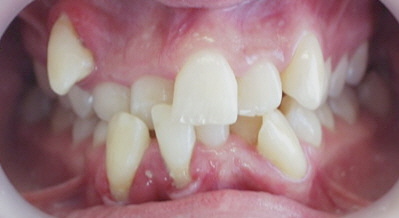
Crowding typically stems from a discrepancy between jaw size and teeth size resulting in crooked and “crowded” teeth. Crowding can lead to gum problems and a higher risk of decay due to difficulty in cleaning.
Spacing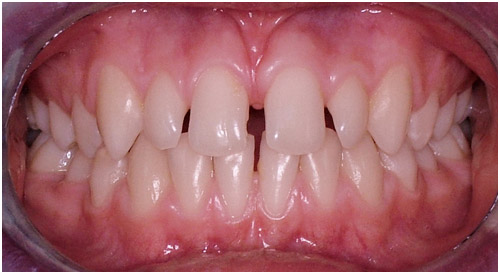
Like crowding, generalized spacing may be related to a tooth-to-jaw size discrepancy. Localized spacing can be caused by protrusion of front teeth, or prominence of the tissue between the front teeth. Other contributing factors include unusually narrow teeth and missing/impacted teeth.
Deep Bite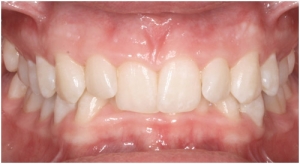
In a deep bite, the upper front teeth cover most or all of the lower front teeth. The lower front teeth may even hit the roof of the mouth and cause trauma to the gum. Excessive front tooth wear is a common consequence of an untreated deep bite. Deep bites can also cause gummy smiles and jaw joint pain.
Open Bite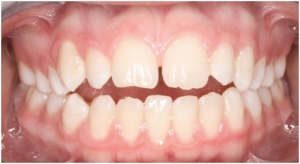
In an open bite, there is an opening between the upper and lower teeth. This condition may exist in the front teeth, in the back teeth, or in both. Tongue thrust, speech problems, allergies, and breathing difficulties might be the cause of an open bite. An open bite can make eating more difficult due to the inability to fully close the teeth.
Crossbite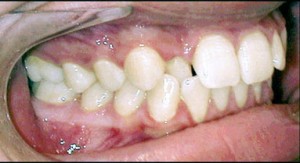
A crossbite is when one (left photo) or a group (right photo) of upper teeth bite on the inside of the lower teeth. This can occur in the front and/or the sides of the mouth. Early correction of crossbite is almost always recommended.
Abnormal Placement/Impacted Teeth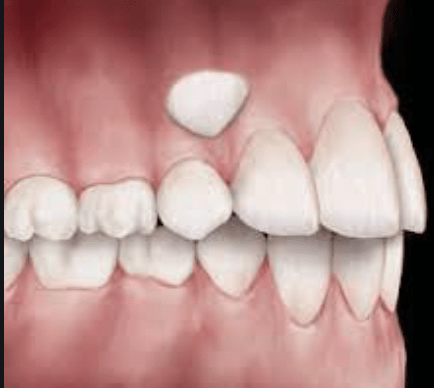
An impacted tooth is a tooth that has been blocked from breaking through the gum. A tooth can be only partially impacted and starting to break through, or fully impacted but show no obvious symptoms. In the second case, those impacted teeth are discovered during an X-ray. Wisdom teeth are the most commonly impacted teeth, but canines and premolars are also commonly impacted.
Impacted teeth need to be addressed because they can:
- cause damage to the root structure of adjacent teeth
- interfere with the sinus cavity
- leave unwanted spaces
- lead to improper functioning of the teeth
- cause premature wear of the teeth
- cause asymmetric alignment of the teeth
Orthodontics can expose the impacted tooth over the course of a few months and eventually bring it to the correct position in the mouth. Correction of impacted teeth may involve a minor surgical procedure performed by an oral surgeon working closely with our practice. This will allow Dr. Woo to effectively guide the eruption of the impacted tooth.

